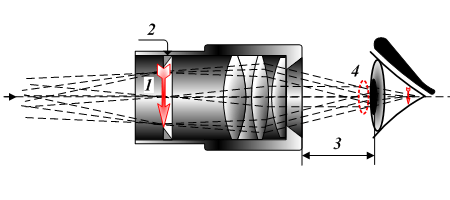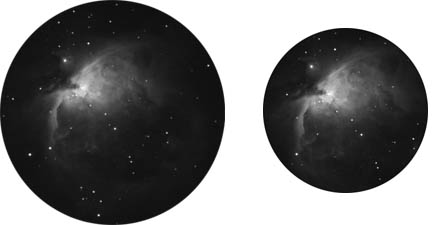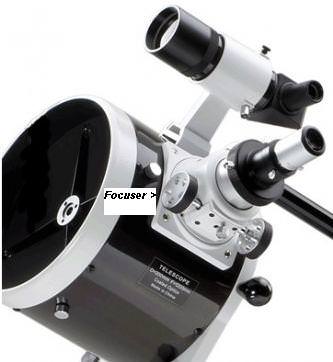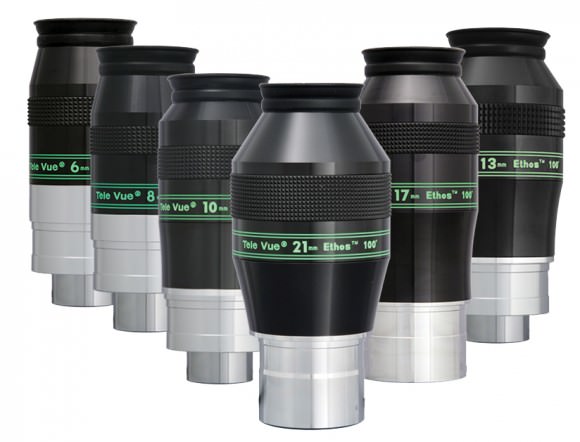Do you have a new telescope, or are you considering buying a new one? Hopefully, you have chosen a telescope with the best specifications for your budget, but before you can truly get the best out of your wonderful new window on the cosmos, you need to have something even more important than the scope – Eyepieces!
A lot of people new to astronomy, or new to buying astronomy equipment tend to concentrate on telescopes and unfortunately overlook eyepieces, settling for the basic set of 2 or 3 that come with the new telescope.
Eyepieces are probably the most important part of your observing equipment, as they are at the heart of your setup and can make your observing experience fantastic or disastrous, or make an average telescope great or an excellent telescope bad.
The Basics
Eyepieces are the part you look through and are responsible for magnification of the objects you see through the telescope. They come in many different magnifications and types, but it’s not rocket science. You will soon learn what eyepieces work well for seeing different astronomical objects.
Telescope eyepieces are designed to fit into the focuser of the telescope. Depending on your telescope, they come in two sizes 1.25” or 2” and there is .965” which is an older size and pretty much obsolete, unless you have an old telescope. Most telescopes can be fitted with adapters so both eyepiece sizes can be used.
Magnification
The magnifying power of any eyepiece is a simple equation expressed in millimetres: Divide the focal length of the telescope by the focal length of the eyepiece and your answer is the amount of magnification. Long focal length eyepieces such as 32mm and 25mm are lower magnification, while lower numbers like 10mm and 5mm are magnifying powerhouses.
It is always good practice to start observing an object with a lower power eyepiece such as a 40mm and gradually build up to higher powered eyepieces such as 10mm or lower. The reason for this is the telescope, human eye, seeing conditions and object being observed are all variable. Starting off with a high power such as 4.7mm may be a struggle.
Fainter objects such as nebula and galaxies are usually seen better with lower powers and you can really ramp up the power with bright objects like the moon.
Below are rough guides and are dependent on the telescope you use:
2mm-4.9mm Eyepieces: These are very high magnification and very difficult to use unless seeing conditions are perfect and the object observed is very bright, like the moon.
5mm – 6.9mm Eyepieces: These are good on bright objects such as the moon and bright planets, but are still very high power and work best with steady seeing conditions.
7mm – 9.9mm Eyepieces: These are very comfortable high magnification eyepieces and are excellent for observing brighter objects, a must for any eyepiece collection.
10mm – 13.9mm Eyepieces: These work well for all objects including brighter nebula and galaxies a good mid/high range magnification.
14mm – 17.9mm Eyepieces: These are a great mid range magnification and will help resolve globular clusters, galaxy details and planetary nebulae.
18mm – 24.9mm Eyepieces: These will work nicely to show wide field and extended objects, great mid-range magnification for objects like galaxy clusters and large open clusters.
25mm – 30.9mm Eyepieces: These are wider field eyepieces for large nebula and open clusters. A good finder eyepiece for locating objects before moving to higher powers.
31mm – 40mm Eyepieces: These are excellent for extended views and large star fields and make excellent finder eyepieces before moving to higher powers.
Eye Relief
Eye relief is the distance from the last surface of an eyepiece at which the eye can obtain the full viewing angle. If a viewer’s eye is outside this distance, a reduced field of view will be obtained and viewing the image through the eyepiece can be difficult. Generally longer eye relief is preferred.

Apparent Field of View
This is the apparent size of the image in the eyepiece and can range from about 35 to 100 degrees. Larger fields of view are more desired.

Types of Eyepiece
There are many different eyepiece types, some old and now obsolete, some simple and some advanced.
The different types of eyepiece are purely governed by the configuration of the glass and lenses inside the eyepiece. Some giving exceptional eye relief, wide fields of view, colour correction etc.
Some different brands of eyepiece include: Huygens, Ramsden, Kellner, Plössl, Orthoscopic and Kellner.
The most common and popular eyepiece type is the Plössl due to its good all round performance, good eye relief, approximate 50 degree field of view, pinpoint sharpness and good contrast. Plössl eyepieces are made by many manufacturers now, but there are excellent examples from manufacturers such as Meade and Televue.
Finally we have exotic eyepieces such as Super Wide and Ultra Wide which are usually 2” eyepieces, with higher powers up to around 4.7mm at 1.25” and are usually in the domain of the large Dobsonian or Newtonian telescope user, but are just at home on smaller telescopes such as refractors or Cassegrains.
These eyepieces sport amazing eye relief and huge “port hole” 80 – 100 degree views with fully loaded premium optics, which are very forgiving on telescopes with optical aberrations and other problems. They can make average or poor telescopes great, but there is a cost; an example of which is my 14mm Ultra Wide which cost £500 ($800) just for one eyepiece and I have a full set! Combined, my eyepieces are worth much, much more than the telescopes they are used on, but it’s worth it!
Eyepieces are the most important part of your observing equipment, choose them and use them well, which will help you enjoy observing through your telescope.




